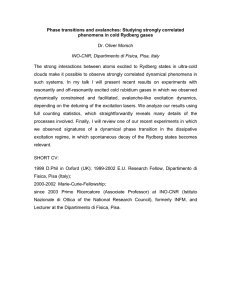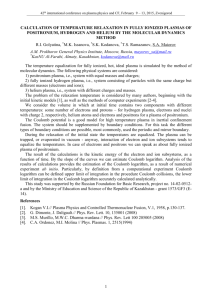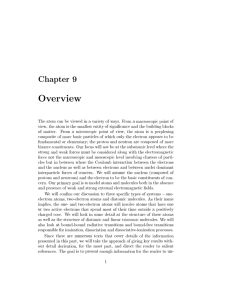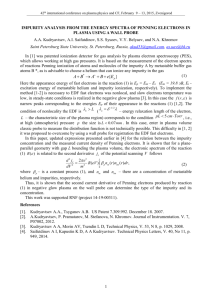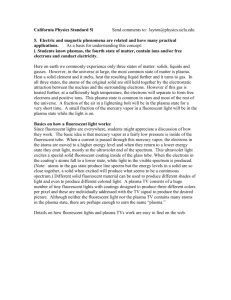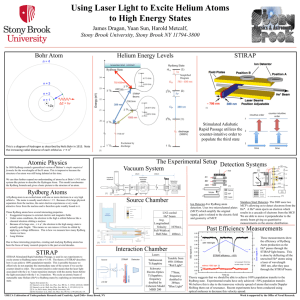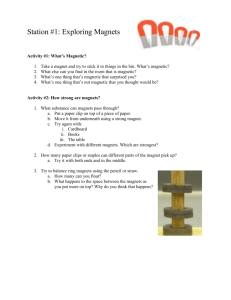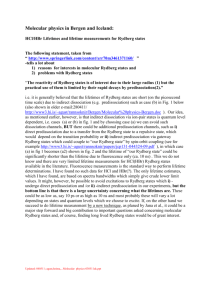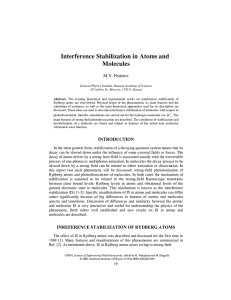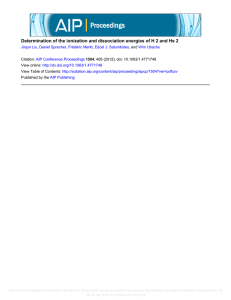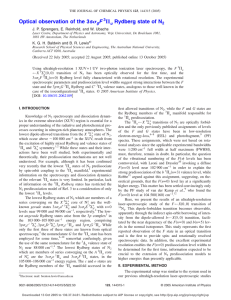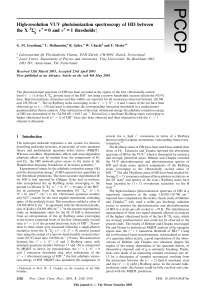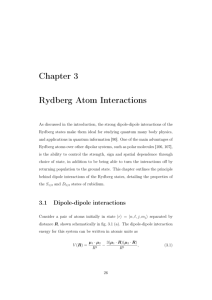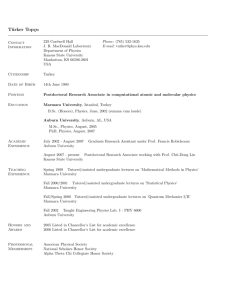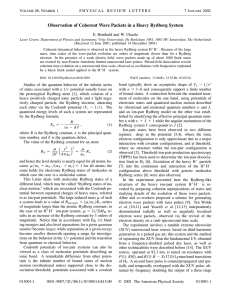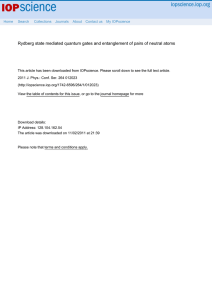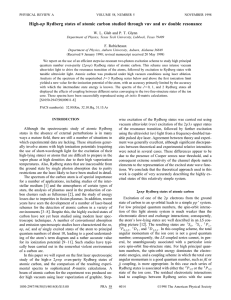model of ionization * recombination balance in strongly coupled
advertisement
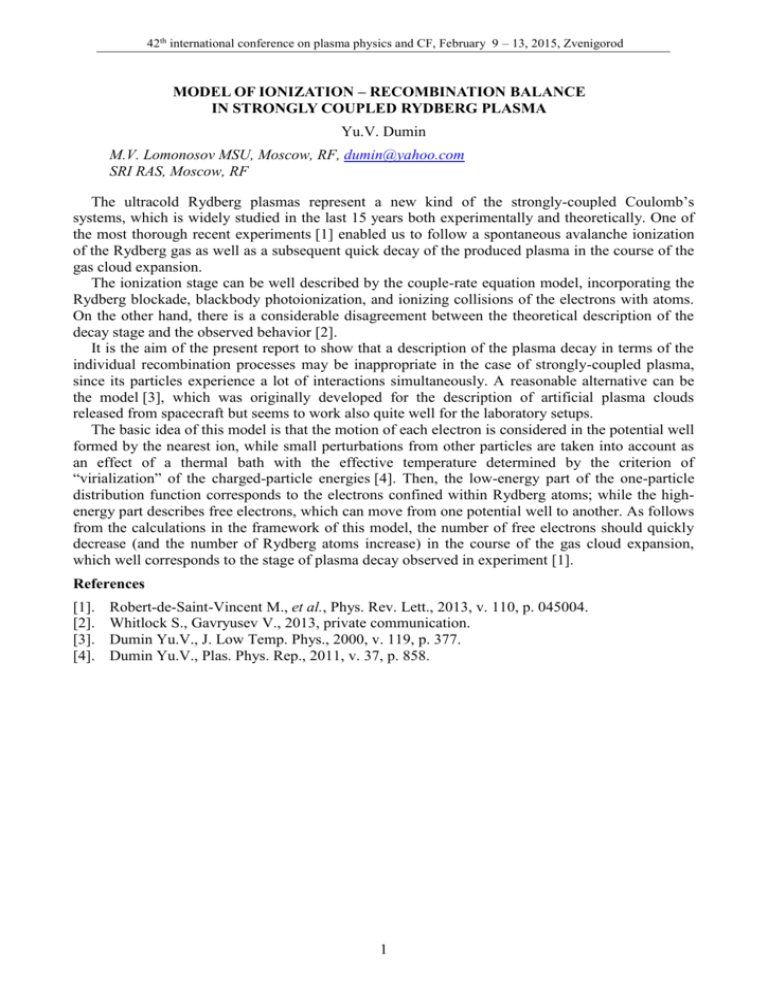
42th international conference on plasma physics and CF, February 9 – 13, 2015, Zvenigorod MODEL OF IONIZATION – RECOMBINATION BALANCE IN STRONGLY COUPLED RYDBERG PLASMA Yu.V. Dumin M.V. Lomonosov MSU, Moscow, RF, dumin@yahoo.com SRI RAS, Moscow, RF The ultracold Rydberg plasmas represent a new kind of the strongly-coupled Coulomb’s systems, which is widely studied in the last 15 years both experimentally and theoretically. One of the most thorough recent experiments [1] enabled us to follow a spontaneous avalanche ionization of the Rydberg gas as well as a subsequent quick decay of the produced plasma in the course of the gas cloud expansion. The ionization stage can be well described by the couple-rate equation model, incorporating the Rydberg blockade, blackbody photoionization, and ionizing collisions of the electrons with atoms. On the other hand, there is a considerable disagreement between the theoretical description of the decay stage and the observed behavior [2]. It is the aim of the present report to show that a description of the plasma decay in terms of the individual recombination processes may be inappropriate in the case of strongly-coupled plasma, since its particles experience a lot of interactions simultaneously. A reasonable alternative can be the model [3], which was originally developed for the description of artificial plasma clouds released from spacecraft but seems to work also quite well for the laboratory setups. The basic idea of this model is that the motion of each electron is considered in the potential well formed by the nearest ion, while small perturbations from other particles are taken into account as an effect of a thermal bath with the effective temperature determined by the criterion of “virialization” of the charged-particle energies [4]. Then, the low-energy part of the one-particle distribution function corresponds to the electrons confined within Rydberg atoms; while the highenergy part describes free electrons, which can move from one potential well to another. As follows from the calculations in the framework of this model, the number of free electrons should quickly decrease (and the number of Rydberg atoms increase) in the course of the gas cloud expansion, which well corresponds to the stage of plasma decay observed in experiment [1]. References [1]. [2]. [3]. [4]. Robert-de-Saint-Vincent M., et al., Phys. Rev. Lett., 2013, v. 110, p. 045004. Whitlock S., Gavryusev V., 2013, private communication. Dumin Yu.V., J. Low Temp. Phys., 2000, v. 119, p. 377. Dumin Yu.V., Plas. Phys. Rep., 2011, v. 37, p. 858. 1
